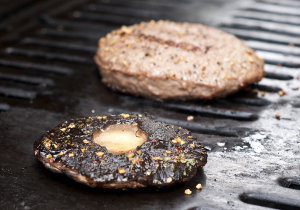In fact, grains aren’t really a good thing for any mammal. We’re better off leaving them to the birds, who have a system adapted to them.
The problem is that our food system is so skewed in the wrong direction that everybody now thinks that grains, especially whole grains, are healthy and nutritious. Grains, a food group that we didn’t eat for 97% of our human existence are now at the bottom of the USDA food pyramid with a recommended 6 to 11 servings per day. This is amazingly wrong!
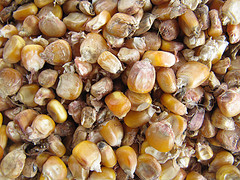
Be aware that the reason why governments pushed grains in the first place where economical. They are cheap to produce (although not without environmental costs), they can be stored for much longer and they can be sold overseas much more easily. In fact, it’s now one of the few things that the US successfully sells overseas, so I wouldn’t count on them to stop promoting them as the healthiest thing around. Sad but true!
Now on to why exactly grains are probably one of the worst mistakes human kind made.
High carbohydrate intake and elevated insulin
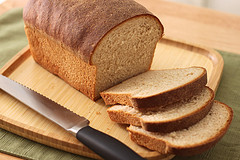
Chronically elevated insulin levels is indeed the number one problem we now have as a society. In a few words, blood sugar as to stay between a very narrow range, otherwise you would die. Insulin’s main job is to lower blood sugar levels after you consume any form of sugar or carbohydrate (they’re converted to sugar anyway). When insulin as to deal with so much sugar that it doesn’t know what to do with it anymore, it stores it as fat. Also, when insulin is always high, inflammation begins and cells become resistant to insulin, so your pancreas as to produce even more of it. When your cells have become resistant to insulin, you’ve become diabetic. This is the new epidemic of westernized countries that we also call the metabolic syndrome.
Guess what, the main food source of carbohydrate in out diet are grains (wheat, corn, rye, oats, barley, rice…). Breads ans pastas are mostly made of wheat. Without grains, people wouldn’t get fat and wouldn’t have high insulin levels. Try to get 300g, US’s recommended daily intake of carbs, with vegetables and fruits. You’ll have to eat buckets of them.
Bread, cookies, cakes, crackers, rice, pasta, pastries and breakfast cereals are all staples and consumed at almost every meal by almost everybody. This leads to a high carbohydrate load at every meal and this is why people get hungry all the time and have so much fluctuation in their energy levels (blood sugar levels are unstable).
Your grand-mother knew that potatoes and pastas are fattening, maybe we should listen to her wise words.
Don’t worry, replacing carbs by fat sources will not kill you. For all human evolution, we’ve been eating animal meat and fat with some vegetables, fruits and nuts in the mix and yet observations demonstrate that caveman was lean, strong and healthy.
Gluten, lectins and phytates, three poisons you can live without
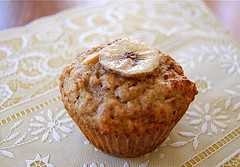
Living organisms all develop ways to protect themselves against preys and invaders. It’s the basis of our survival mechanisms. Animals can usually run or attack, but plants have to find another way. In fact, most plants contain some form of toxins so animals can’t eat too much of them before getting sick.
The only part of a plant that want s to be eaten are fruits, and this is not without a purpose. Fruits contain seeds that we and other animals can’t digest so we evacuate them elsewhere and help propagate the plant to new horizons. It’s a fair partnership after all. It’s not by accident that plants produce fruits, it takes up most of its resources do to so.
Grains are not different from most plants and in certain regards they’re much worse. Grains are the offsprings of soon to become grasses so they need even more protection in the beginning to ensure other species stay far away. Other then that, they also contain toxins that inhibit their own growth until they have what they need to grow (soil and water).
Gluten
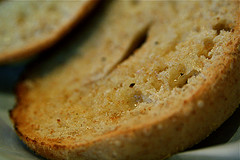
Gluten is, arguably, the worst offender. You can find gluten in wheat, rye and barley. Don’t forget that wheat is absolutely everywhere today. You probably already know that those who have Celiac disease can’t have even a tiny bit of it or else they’re in for big trouble.
What you might not know though is that 30% of the population have noticeable amounts of antigiadin in their stools. Antigiadin are antibodies secreted when the body sees giadin, one of gluten’s constituent, as an intruder. Having the antibody in your stools means that your body is actively fighting an intruder and that you already have a low level of chronic inflammation, the source of all modern diseases.
Gluten also has this weird ability to mimic certain proteins and to make its way into your cells, then wreaking havoc and making you develop autoimmune diseases where the body attacks itself (Chron’s disease is an example).
Lectins
Lectins are other toxins present in all grains that cause their load of problems. First, they damage the gut lining and a damaged gut lining is an inflamed gut lining that will have difficulty absorbing nutrients. This also leads the way to colon cancer. Lectins also causes leptin resistance, which means that your hunger signal is suppressed and that you’ll be hungry even when your body has had more than enough calories.
Phytates
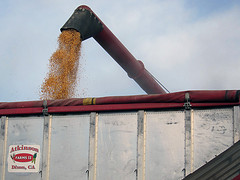
This other set of toxins, also found in lesser quantities in nuts and seeds, bind to nutrients and robs them from your body. You can then think twice when you think that eating grains will feed you loads of nutrients. Phytates make a good job of making them less bio-available. All this list of nutrients on a bag of sliced bread is only a small proportion of what your body will really be able to get.
Do you think that grains can beat any vegetable or fruit nutrition wise or that you’ll find some nutrients only in them? The answer is NO!
Conclusion
I sincerely hope that this article helped shed some light on the problems caused by this group of food that is so popular.Of all the habits that you can develop, dropping the grains off your diet is probably the one that will pay off the most.


